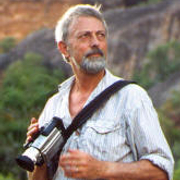
Science, Politics and Global Warming
by Wallace Thornhill
23 December, 2009
The Global Warming circus in Copenhagen was politics driven by a consensus that, by definition, has nothing to do with science. The apocalyptic nonsense that opened the meeting highlighted that fact. How many who attended or demonstrated at the meeting actually understand the (disputed) scientific grounds for the hysteria? Meanwhile, leading science journals allow skeptics of Anthropogenic Global Warming (AGW) to be labelled "deniers" and refuse them the right of reply. It is doctrinaire denouncement, not science. It is the journal editors who are denying the scientific method by censoring debate. It is they who are peddling ideology.
Despite the glossy media image, modern science is a mess. When the fundamental concepts are false, technological progress merely provides science with a more efficient means for going backwards. At the same time, government and corporate funding promotes the rampant disease of specialism and fosters politicization of science with the inevitable warring factions and religious fervor.
Science has become religion! ..although religion may have borrowed some of the jargon of science, science, more importantly, has adopted the methods of religion. This is the worst of both worlds.
- Halton Arp.
There have been several warm climatic periods documented in history that had nothing to do with human activity. There seems to be evidence that the Earth has actually been cooling since 2001, in line with reduced solar activity. So it would be more realistic to consider climate change as a normal phenomenon and to plan accordingly because despite all of the hoopla in the media, modern science is founded on surprising ignorance. An iconoclastic view suggests the following:
— cosmologists have been misled by theoretical physicists who don't understand gravity, which forms the basis of the big bang theory. Imaginary 'dark matter,' 'dark energy,' and black holes have been added to make models of galaxies and star birth appear to work. When all else fails, mysterious magnetic fields are invoked. The bottom line is that cosmologists presently have no real understanding of the universe;
— astrophysicists don't understand stars because they steadfastly ignore plasma discharge phenomena;
— particle physicists don't understand matter or its resonant electrical interactions. They prefer to invent imaginary particles;
— geologists have been misled by astronomers about Earth's history;
— biologists have had no practical help from theoretical physicists so they don't understand what might constitute the 'mind-body connection' or 'the spark of life;'
— and climate scientists have been misled by astronomers and astrophysicists so they have no real concept of recent Earth history in the solar system and they don't understand the real source of lightning and the electrical input to weather systems. For example, the major city in northern Australia, Darwin, was utterly destroyed in tropical cyclone 'Tracy' in 1974. The catastrophe was described in part, “At 3am, the eye of the cyclone passed over Darwin, bringing an eerie stillness. There was a strange light, a diffuse lightning, like St. Elmo's fire.” There was no solar energy being supplied to the 150km per hour winds at 3 in the morning. "A diffuse lightning" is an apt description of the slow electrical discharge (distinct from impulsive lightning) that drives all rotary storms and influences weather patterns. That is why the electrically hyperactive gas giant planets have overwhelmingly violent storms while receiving very little solar energy.
Yet with these unacknowledged shortcomings we have bookshelves filled with textbooks, science journals and PhD theses, mostly unread, that would stretch to the Moon, fostering the impression that we understand most things. And the public is assailed with documentaries that breathlessly deliver and repeat fashionable science fiction as fact. How can this be?
Science has left its classical and philosophical roots, rather like surrealist art departed from realism. The analogy is fitting. It is demonstrated by the fondness for expressing theoretical models in artists impressions, computer animations and aesthetic terms. The artist/philosopher Miles Mathis is of the opinion that “Science has become just like Modern Art. The contemporary artist and the contemporary physicist look at the world in much the same way. The past means nothing. They gravitate to novelty as the ultimate distinction, in and of itself. They do this because novelty is the surest guarantee of recognition.” So why does the media not have science critics alongside art critics? Has science become sacrosanct? Bluntly, the answer is yes. No science reporter wants to have the portcullises lowered at the academic bastions. Happily, the Internet allows the curious to circumvent such censorship.
Read more...
http://www.thunderbolts.info/thunderblogs/thornhill.htm









